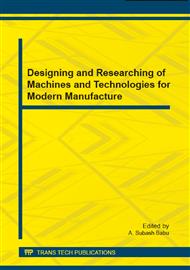p.410
p.417
p.422
p.426
p.430
p.436
p.441
p.447
p.451
Stress Analysis of All Ceramic Fixed Partial Denture by Finite Element Method
Abstract:
With attempt of using all-ceramic fixed partial denture (FPD) on posterior teeth region while the high-strength ceramics themselves cannot be guaranteed for the strength of the FPD, the length of pontic of FPD is considered to be one of the significant factors that influence the FPD strength. This study was therefore aimed to use FEA to simulate the actual laboratory test in investigating whether a 3-unit all-ceramic FPD on posterior teeth could tolerate the maximum normal bite force, which is approximately 665 N. The FPD was designed to be fabricated with In-Ceram® zirconia and have pontic length of 11 mm. The simulation was performed using a 2-dimensional finite element analysis (FEA) on ANSYS software. Lower second premolar and second molar teeth were placed at 11 mm apart in acrylic resin block. The teeth were prepared to be abutments of FPD. The result of the FEA showed that the FPD could tolerate the force exceeded the maximum normal bite force on molar region in human. This is corresponding with the previous study performed in the laboratory presenting that the FPD can withstand the load of greater than 1000 N. As the FEA has given the relevant result to that of the laboratory test, further investigations are anticipated to be performed to achieve the optimum length of a 3-unit all-ceramic FPD on posterior teeth fabricated in various systems.
Info:
Periodical:
Pages:
430-435
Citation:
Online since:
December 2014
Authors:
Keywords:
Price:
Сopyright:
© 2015 Trans Tech Publications Ltd. All Rights Reserved
Share:
Citation:


